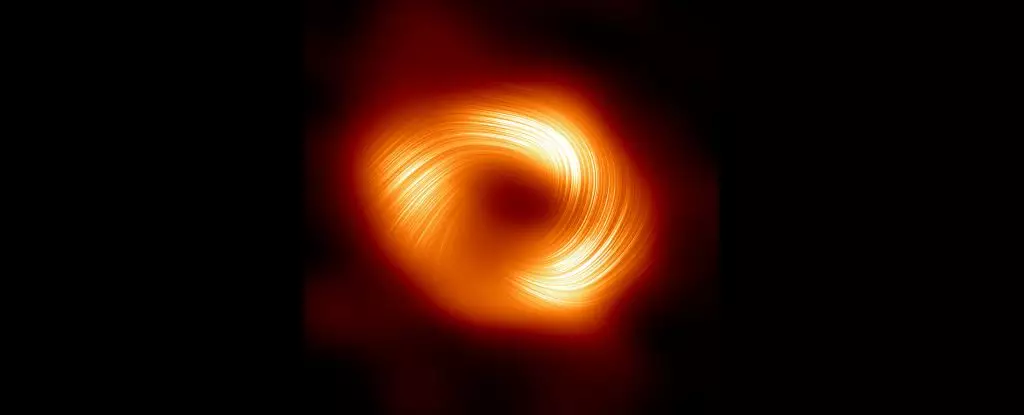The recent discovery of magnetic fields spiraling around Sagittarius A*, our galaxy’s supermassive black hole, has been made possible through the utilization of twisted light imaging techniques. Scientists have successfully captured and measured the polarization effect in a direct image of Sgr A*, revealing a magnetic field structure remarkably similar to the shadow of the only other supermassive black hole ever imaged directly, M87*.
According to astrophysicist Sara Issaoun of the Harvard & Smithsonian Center for Astrophysics, the observation of strong, twisted, and well-organized magnetic fields near the black hole at the core of the Milky Way provides valuable insights into how black holes interact with the surrounding gas and matter. This discovery highlights the crucial role that strong and ordered magnetic fields play in the functioning of supermassive black holes.
Capturing images of black holes presents a significant technological challenge, and the Event Horizon Telescope (EHT) collaboration has dedicated years to gathering data for processing images of Sgr A* and M87*. Moving forward, the focus will be on interpreting the collected data to enhance our understanding of the mechanisms at work in supermassive black holes.
Examining the polarization of light offers a unique perspective on the environment surrounding black holes. By studying the orientation of light oscillations, scientists can infer information about the structure and strength of magnetic field lines. The polarization of synchrotron radiation emitted by electrons along magnetic field lines provides valuable insights into the behavior of black holes.
The investigation into the magnetic field of Sgr A* involved a two-fold process. Initially, the polarization of light was detected using multiple telescopes, including the Atacama Large Millimeter/submillimeter Array. Subsequently, scientists unraveled the meaning behind the data, mapping the magnetic field structure around Sgr A*. The results unveiled a robust magnetic field that intertwines around the black hole and the surrounding dust cloud, mirroring the magnetic field observed around M87*.
Despite significant differences in mass and activity levels between Sgr A* and M87*, their magnetic field structures exhibit striking similarities. This unexpected parallel suggests a universal and fundamental feature of supermassive black hole systems. The discovery provides a new framework for interpreting black hole behavior and offers direction for future research endeavors.
The discovery of magnetic fields near Sagittarius A* marks a significant advancement in our understanding of supermassive black holes. The uncanny resemblance between Sgr A* and M87* underscores the need for continued exploration and observation to unravel the mysteries of these cosmic phenomena. As scientists delve deeper into the complexities of black holes, new insights and revelations are bound to emerge, shaping our perception of the universe.


Leave a Reply